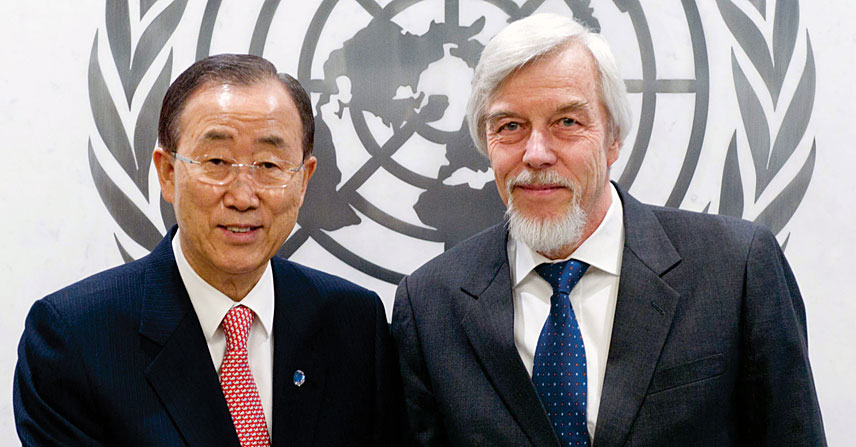CERN gains observer status at United Nations
DOI: 10.1063/PT.3.1881
“We can take the floor,” says CERN Director-General Rolf Heuer. His remark refers to the observer status his organization was granted in a 14 December 2012 resolution by the United Nations General Assembly. Observers can participate in the work of the General Assembly, attend sessions, and sponsor and sign resolutions, but cannot vote on resolutions. Rather than appoint an ambassador, CERN will send people who can best represent the lab at specific UN sessions, Heuer says.
CERN’s observer status “raises the visibility of science” and affords the opportunity to show the political community “what science can bring to mankind,” Heuer says. “Many parts of the world are in economic crisis—or at least talk about economic crisis,” he continues. “Research cannot avoid crisis, but it can moderate crisis. Research is one of the building stones for the future.”
Heuer also expects CERN’s UN observer status to convey more influence in capacity building and education. The laboratory already collaborates with UNESCO on training programs for teachers and librarians in Africa. Now, he says, “We can take a leading role to show how important [such programs are], and how much return you get through little investment.”
CERN’s association with the UN goes back to the lab’s founding by UNESCO in 1954. Several factors came together to make now a good time to become a UN observer, Heuer says. He notes that UN Secretary-General Ban Ki-moon (seen here with Heuer on 17 December 2012) has placed science high on his agenda, and Heuer points to the worldwide visibility CERN has enjoyed since the Large Hadron Collider turned on a few years ago, and especially since a Higgs-like boson was discovered last summer (see Physics Today, September 2012, page 12
CERN is the first scientific organization to join the ranks of observers. Other nonstate observers include the International Olympic Committee, the International Committee of the Red Cross, the League of Arab States, and the International Seabed Authority, to name a few.

UNPHOTO/EVAN SCHNEIDER

More about the Authors
Toni Feder. tfeder@aip.org





